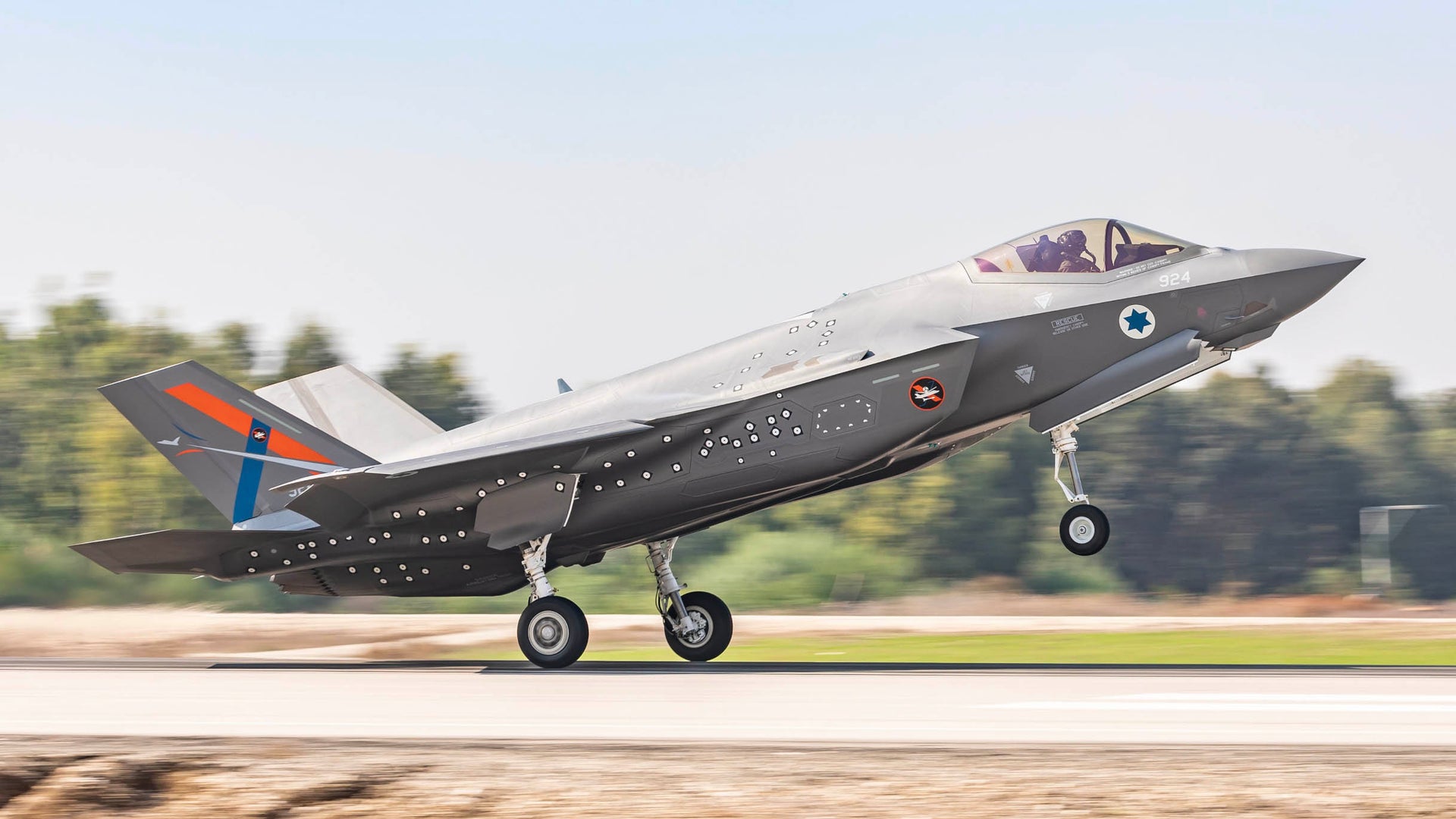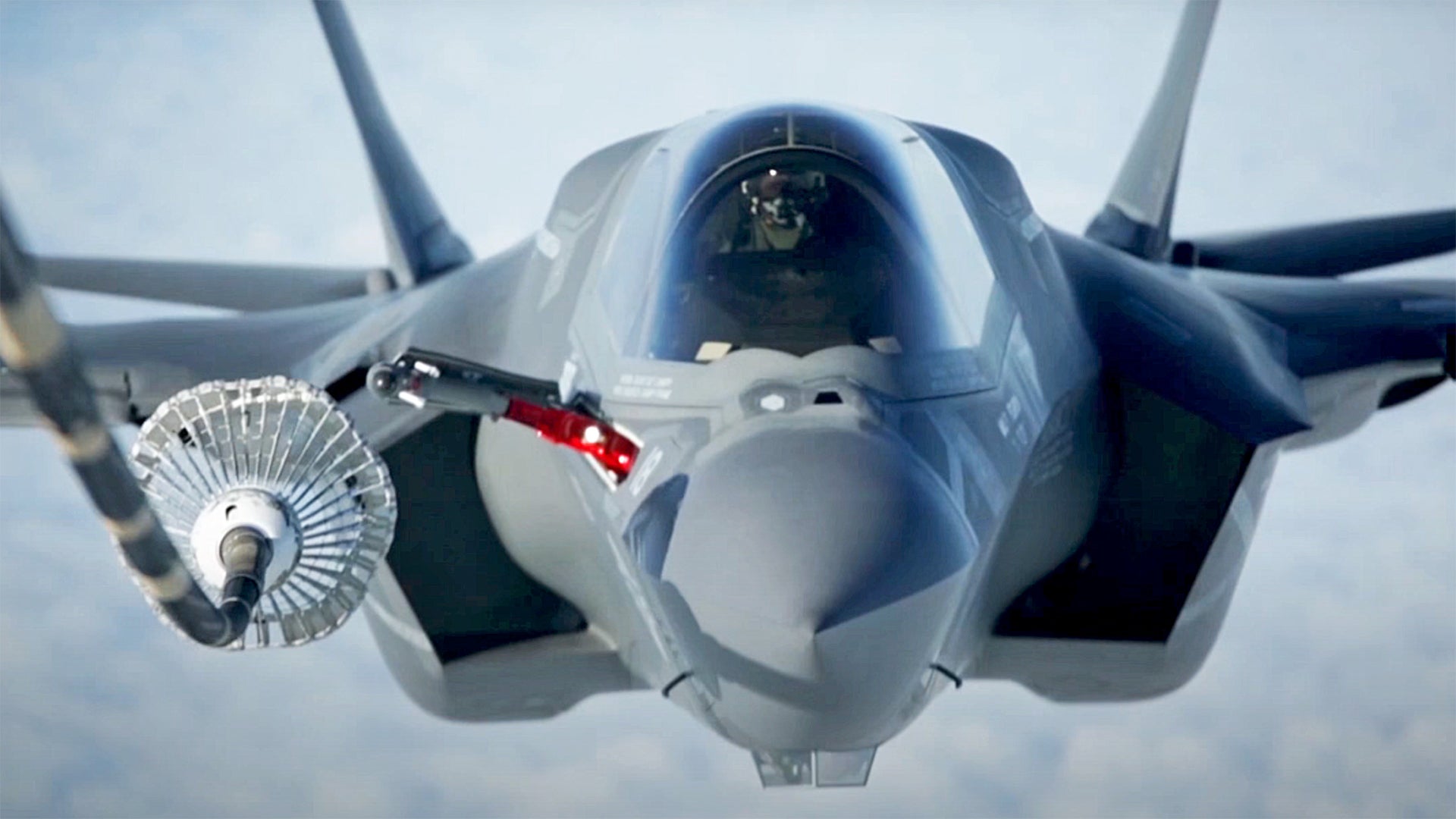Work is due to begin on a mysterious new variant of the F-35 stealth fighter for an as-yet-unnamed foreign customer. A contract announcement posted recently confirms that Lockheed Martin has received just over $49 million of Foreign Military Sales (FMS) funds to develop the unspecified “Joint Strike Fighter aircraft variant,” with speculation now focusing on what changes this could involve, and which operator it’s destined for.
The full contract announcement, published online December 27, reads as follows:
Lockheed Martin Corp., Fort Worth, Texas, is awarded a $49,059,494 cost-plus-incentive-fee-contract that provides engineering and other related activities in support of the design and development of a Joint Strike Fighter aircraft variant tailored for an unspecified Foreign Military Sales (FMS) customer.
Work will be performed in Fort Worth, Texas (77%); Redondo Beach, California (14%); Orlando, Florida (6%); Baltimore, Maryland (1%); Owego, New York (1%) and Samlesbury, United Kingdom (1%), and is expected to be completed in December 2026.
FMS funds in the amount $49,059,494 will be obligated at time of award, none of which will expire at the end of the current fiscal year. This contract was not competitively procured pursuant to 10 U.S. Code 2304(c)(1). The Naval Air Systems Command, Patuxent River, Maryland, is the contracting activity (N0001922C0015).

It seems highly unlikely that the new F-35 variant would be for a new, previously unannounced customer. It would be very unusual for the United States to award a contract for the development of an F-35 variant for a customer who has not already agreed to buy the aircraft.
The fact that the contract has been placed by Naval Air Systems Command (NAVAIR) also doesn’t tell us more, since this serves not only as the contracting agency for all F-35 FMS customers but is also home to the entire F-35 Joint Program Office. Therefore, the aircraft could be a modification of the conventional takeoff and landing (CTOL) F-35A, or the short takeoff and vertical landing (STOVL) F-35B. So far, there are no foreign customers for the F-35C carrier variant, which would rule out a development of this version.
Most likely, we are looking at a country-specific subvariant of an F-35A or B model. However, a NATO customer is probably less likely, considering that a truly bespoke variant would be at odds with interoperability requirements within the alliance.
As for what this new iteration of the Joint Strike Fighter might actually consist of, the chances are weighted highly in favor of a more modest modification, or series of changes, to suit the specific local requirements of a particular customer. After all, the price tag of $49 million for this contract is really not large in F-35 terms, especially as that covers work through December 2026. This is, of course, a program that has been regularly hit by spiraling costs that have affected export customers too.
F-35 modifications to meet local demands are not unprecedented. After all, many foreign F-35 customers request certain changes to their aircraft, frequently relating to weapons capabilities, but also other features, like the drag chute found on Norway’s F-35As and which has also been selected by Finland, the most recent Joint Strike Fighter customer.
An F-35A drag chute test in Norway:

More radical changes are embodied in Israel’s one-off test version of its F-35I “Adir,” specially equipped to put the type’s equipment through its paces, including aircraft and weapons trials, avionics integration, and airframe modification and testing. You can read all about the background to this unique F-35 model in this previous article.
In particular, the Israeli test jet will help with the introduction of Israeli-developed weapons destined for operational F-35Is, expected to include the Rafael SPICE precision-guided bomb, but potentially also air-to-air missiles and other weapons. The operational F-35Is are also adding specific communications and electronic warfare systems, which will be tested locally first. These jets are also distinct from other F-35As thanks to Israel’s ability to install its own distinct mission software and do so independent of the Autonomic Logistics Information System (ALIS), which also handles plenty of critical mission functions.
The new contract may well be for the continuation of work already underway, which could apply to Israel. Back in 2018, Lockheed won a contract to develop Israeli-specific modifications under the Block 3F+ production effort, with work due to run until the end of this year. This new contract could well serve to extend that work.

Israel has in the past also looked at extending the range of its F-35I fleet by incorporating external fuel tanks and even conformal fuel tanks. Either of these would be especially useful for long-range strikes of the kind that the F-35I would likely be tasked with. The contract may have to do with integration work related to this.
On the other hand, not naming the FMS customer may point to Singapore, which has ordered an initial batch of just four F-35Bs that are scheduled to be delivered in 2026. That would not only tally with the timescale of the contract, but Singapore also often prefers not to be named in FMS contracts, citing operational security concerns.
Singapore, like Israel, has traditionally required additional unique capabilities to be integrated into its fighter jets and the F-35B may be no exception. Indeed, Singapore will be the first user to operate the STOVL version of the jet exclusively from land bases and may require modifications to its aircraft to suit its unique concept of operations. The first four Singaporean jets will be used to evaluate whether the F-35 really is a good fit for the tiny country, which could also point to aircraft configured more specifically for testing purposes.
In fact, Singapore could be looking to incorporate some of the same electronic warfare and/or weapons systems that Israel is installing in its F-35s, which would continue an established military relationship between those two countries.
One other factor specific to Singapore is the refueling capability for the F-35B variant it has selected. The STOVL model comes with a refueling probe as standard rather than the receptacle that’s used on the Republic of Singapore Air Force’s frontline F-15SG and F-16 tactical jets — as well as on F-35As. It’s conceivable that the modifications could relate to equipping Singaporean F-35Bs with a refueling receptacle, which would provide compatibility with the boom on its A330 Multi-Role Tanker Transport (MRTT) aircraft. While the MRTTs do feature wingtip pods for probe-and-drogue refueling, the receptacle offers much greater fuel transfer rates and could be an attractive capability for Singapore.

By the same token, it’s also possible that an F-35A customer is looking to outfit its receptacle-equipped jets with refueling probes. This could be a factor for a country like Finland, a recent Joint Strike Fighter customer, whose current F/A-18C/D fighters routinely refuel from pod-equipped tankers. This is not a new proposition. Lockheed is well aware of the potential for such a modification. Canada, for instance, would likely require the same configuration if they were to buy the F-35A. This would also make sense with the work being related to a new variant, as the outright configuration would differ from its F-35A counterparts.
Israel and Singapore are certainly both possible candidates for the mystery contract, but Steve Trimble, Defense Editor at Aviation Week, has pointed out that he thinks the work may be strictly limited perhaps to a handful of avionics revisions as requested by an existing customer.
If that’s the case, then the wording of the contract announcement is at least curious, pointing specifically to what’s described as a “tailored” new variant of the aircraft.
With that in mind, some observers have suggested that the work may refer to some previously unknown ‘downgraded’ export variant of the F-35, perhaps developed for a more sensitive customer with specific concerns around high-end capabilities or security issues. Taiwan or the United Arab Emirates would potentially fit those descriptions, but the very early nature of discussions about possible F-35 orders would also seem to make that all but impossible. While the UAE has at least been approved as a future F-35 customer, the future of such a deal hangs in the balance amid concerns over stringent safeguards to protect these systems against Chinese espionage, an issue you can read about here.
There have been other contracts related to specific modifications of the F-35 for FMS customers, even just this year. However, while thin on details, these have differed from the latest announcement in elements of their wording. While the costs involved are broadly similar in each case, they have applied to modifications that apply to multiple unidentified FMS customers, rather than just one. Among these earlier contracts, one valued at $13.7 million is for “support of sustainment efforts for flight test instrumentation air systems,” which could again point to the Israeli-specific test jet.
Beyond the possible need for a refueling probe on its A models, Finland has already said that its aircraft will feature some significant differences compared to other F-35As. According to the Finnish Air Force, “the solution encompasses the maintenance capabilities to be built in Finland as well as spare components and replaceable assemblies for exceptional circumstances that are under the sole national control of Finland as well as participation in the multinational maintenance network.”
Another non-aligned F-35 customer, Switzerland, could conceivably also be seeking to incorporate some special modifications in its jets, and tweaking the design to use a host of specific parts would likely be within the realm of something in this price range. However, both Finland and Switzerland are expecting to get their first F-35s in 2025, a year in advance of when work will be completed under this contract.
As it stands, we can only really speculate as to which F-35 customer is involved in this apparently bespoke work, while the degree of change in what’s purportedly a new variant of the jet is also unknown at this stage. Our best guess would be this pertains to giving the A model a refueling probe, necessitating its own variant terminology, but that is just a guess. We have reached out to NAVAIR for more information and will continue to bring you more details of this intriguing story just as soon as they emerge.
Contact the author: thomas@thedrive.com
